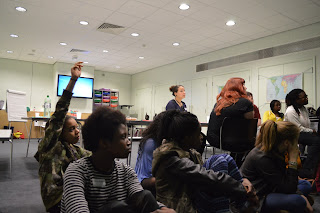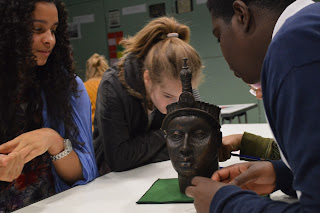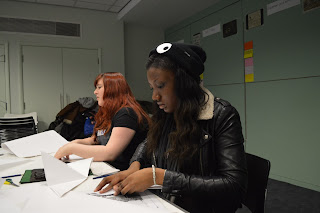We then started to note anything we know about the Transatlantic Slave Trade, one piece of information on each card

Once we had our ideas, they were stuck on the wall, under different headings. The headings were 'Africa before slavery', 'The Trade', 'Plantation Life', 'Abolition' and 'Legacy'. We could immediately see that the biggest amount of knowledge was about the Trade, and we could work to fill in the other gaps.
Each group were given a task to lead on, the next one was to look at some objects from the Museum's handling collection. The Group had to think about what the objects were, what they were made from, what stories
We then shared our objects with the rest of the Group, telling what we thought it may be and 'storying' the objects.
After this, we began to look at the patterns in the objects and added them to triangles of paper we had cut, filling up three sections with patters we could see in the objects.
We then went into the Galleries, to Atlantic Worlds to see what information we could find on plantation life for the timeline in the Learning Space.
The Group looked for more patterns in these objects to add to the paper triangles.
We added new information to the timeline, filling in the gaps in knowledge.
Finally, we could join up the patterns created throughout the day, creating a big piece of shared work.
We also looked at where different textiles came from and the meaning they have, using images ans a world map.






































































No comments:
Post a Comment